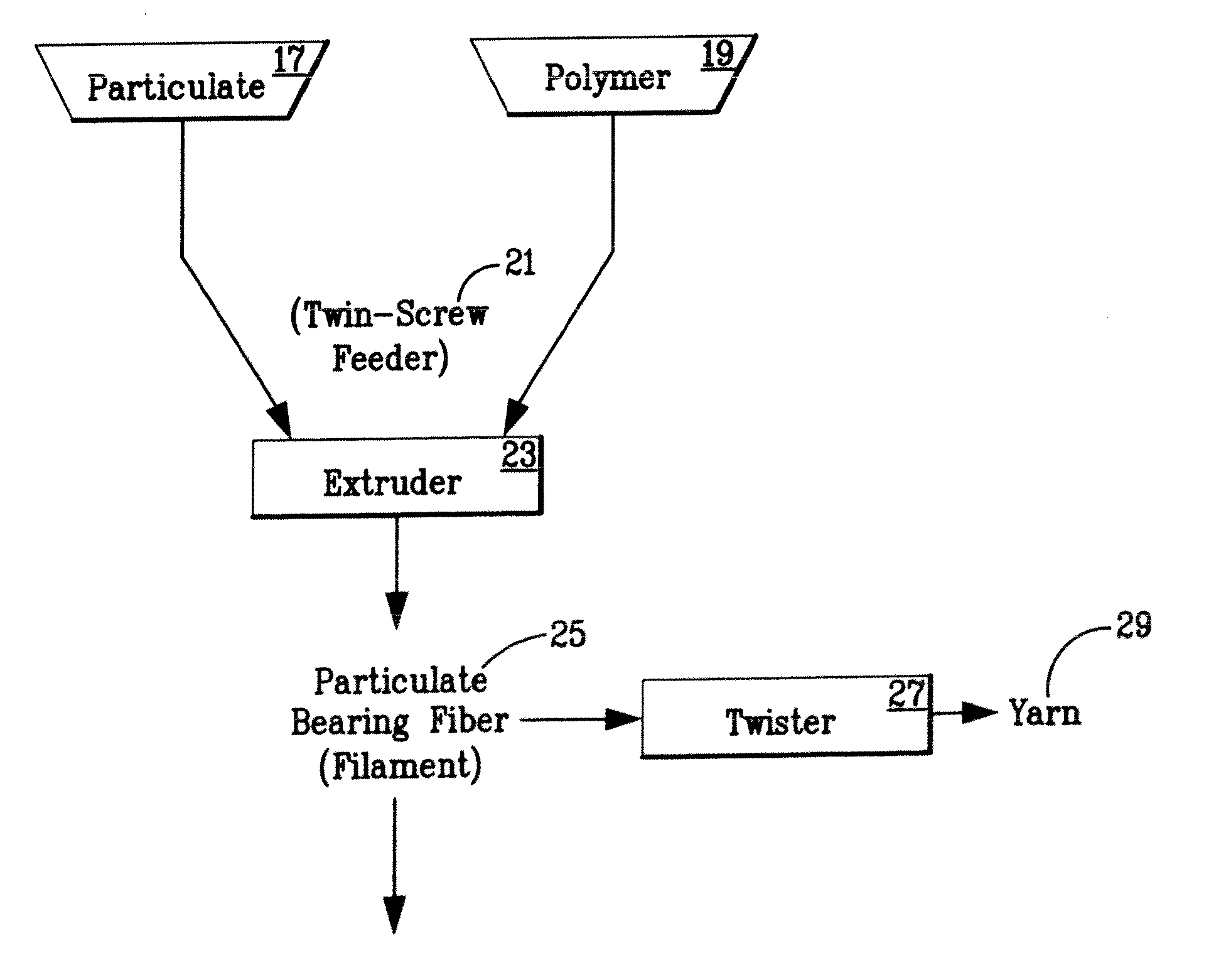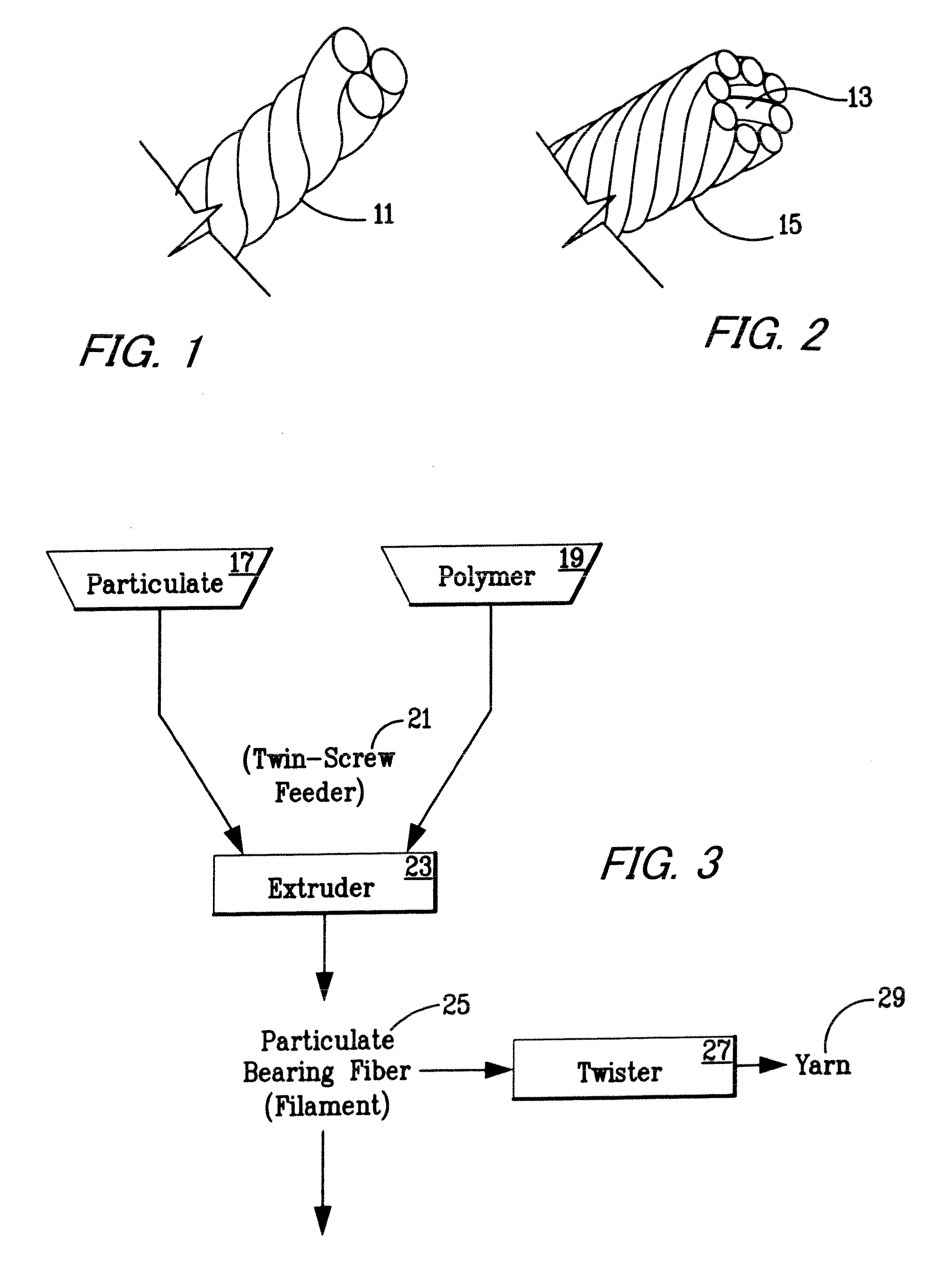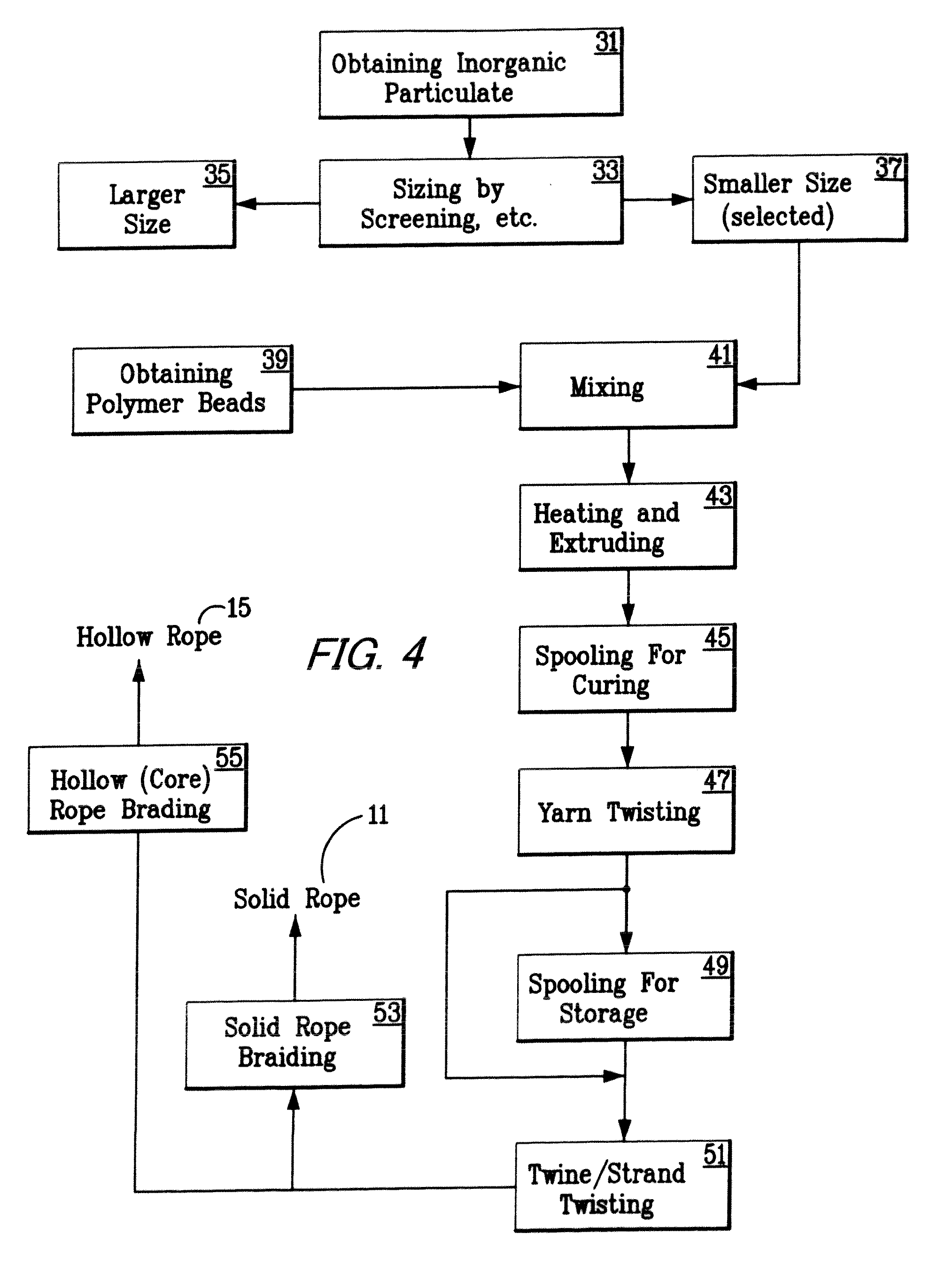Whale safe groundline and yarn and fiber therefor
a safe and sand-based technology, applied in the field of ropes, can solve the problems of high probability of animal death, infective wounds, animal death, etc., and achieve the effects of improving wear resistance, good flexibility, and not accumulating gri
- Summary
- Abstract
- Description
- Claims
- Application Information
AI Technical Summary
Benefits of technology
Problems solved by technology
Method used
Image
Examples
Embodiment Construction
[0031] The present invention is an improved rope for use as an open ocean groundline, having a negative buoyancy and enhanced abrasion resistance and resistance to sand infiltration. This rope is intended to reduce or eliminate the floating of groundline which occurs in the open ocean, FIG. 8, and the floating of groundline in water columns frequented by whales and other cetaceans when feeding.
[0032] The rope is made from a melt-processed polymer such as a polypropylene or a blend of polypropylene and polyethylene. The polymer is filled with a filler chosen from: talc, barium sulfate, barytes, calcium sulfate, clay, diatomatious earth, silica, alumina, kaolin, carbon, aluminum hydroxide, titanium dioxide, glass, wollastonite, organosilicone powders, sand, calcium silicate, and magnesium silicate calcium silicate, iron oxides, aluminum silicate, and combination mixtures of these.
[0033] These filler materials vary considerably in their chemical and physical properties and are not to...
PUM
 Login to View More
Login to View More Abstract
Description
Claims
Application Information
 Login to View More
Login to View More - R&D
- Intellectual Property
- Life Sciences
- Materials
- Tech Scout
- Unparalleled Data Quality
- Higher Quality Content
- 60% Fewer Hallucinations
Browse by: Latest US Patents, China's latest patents, Technical Efficacy Thesaurus, Application Domain, Technology Topic, Popular Technical Reports.
© 2025 PatSnap. All rights reserved.Legal|Privacy policy|Modern Slavery Act Transparency Statement|Sitemap|About US| Contact US: help@patsnap.com



